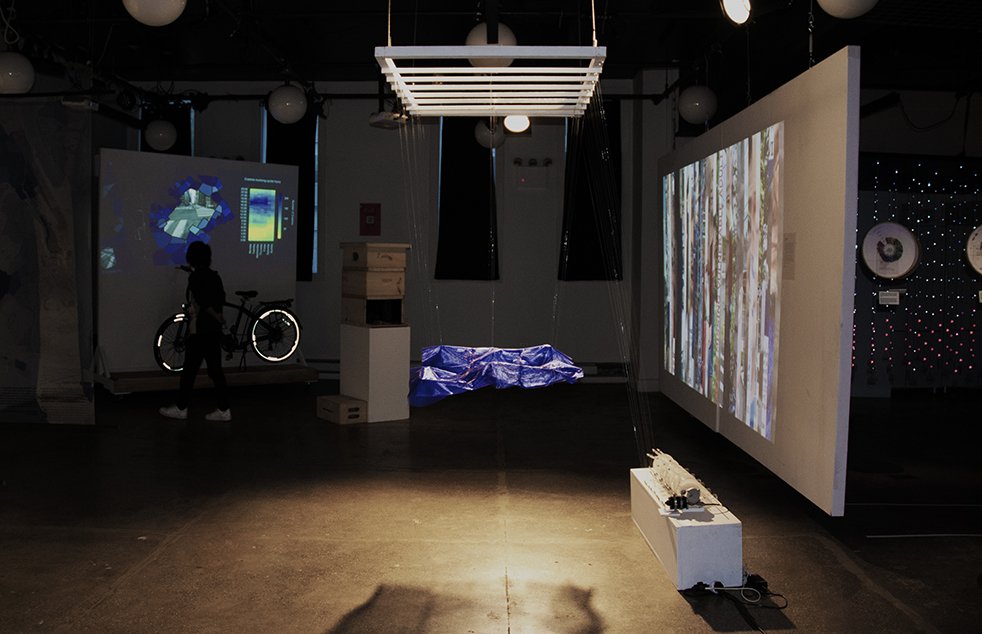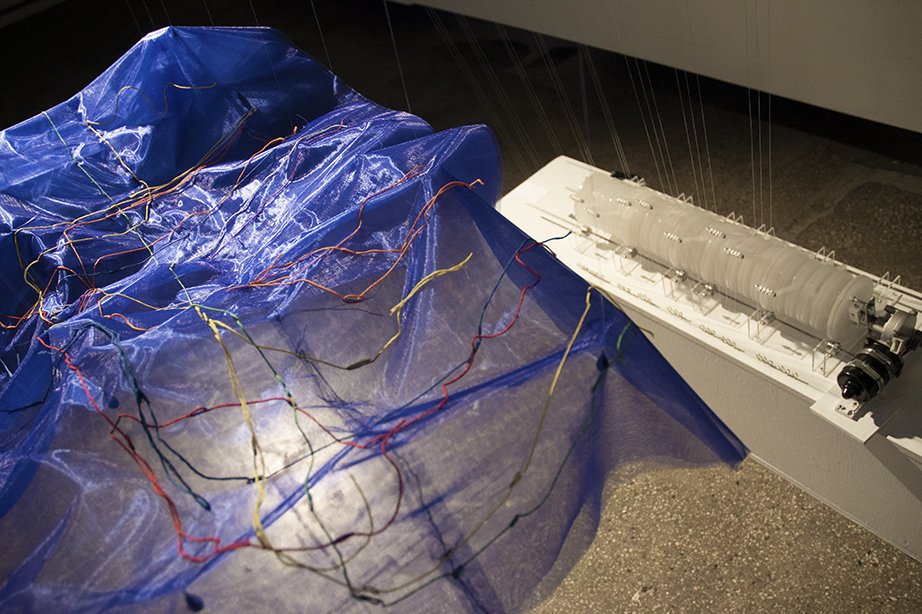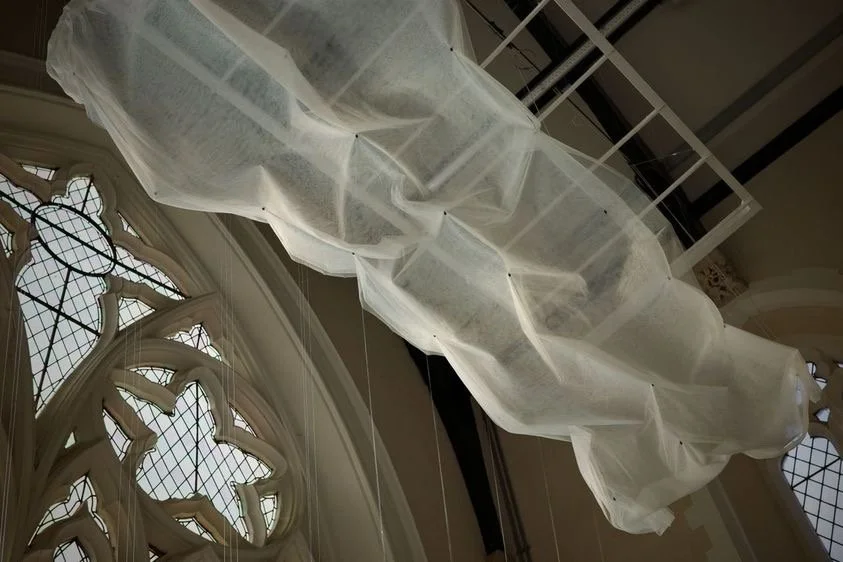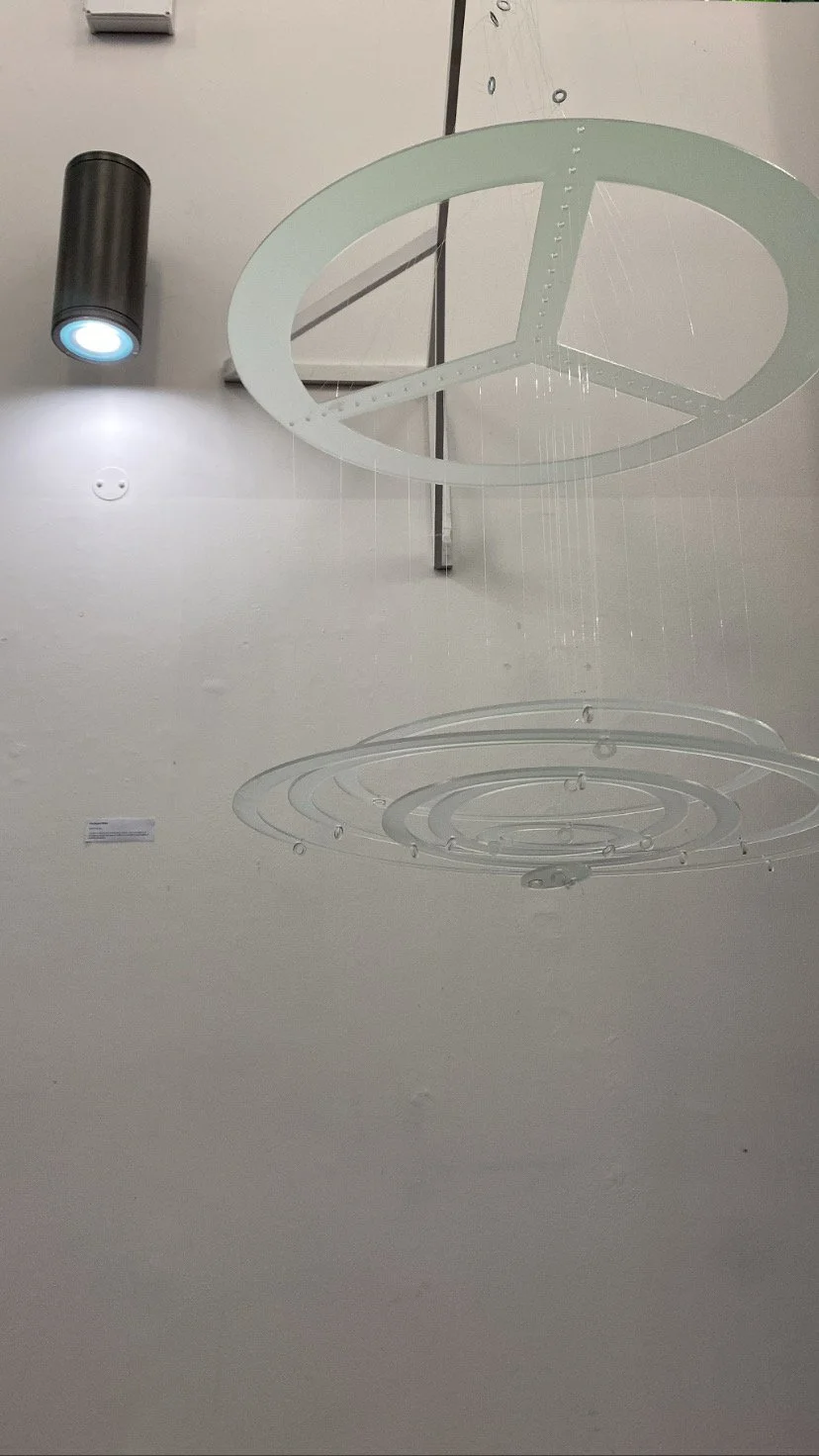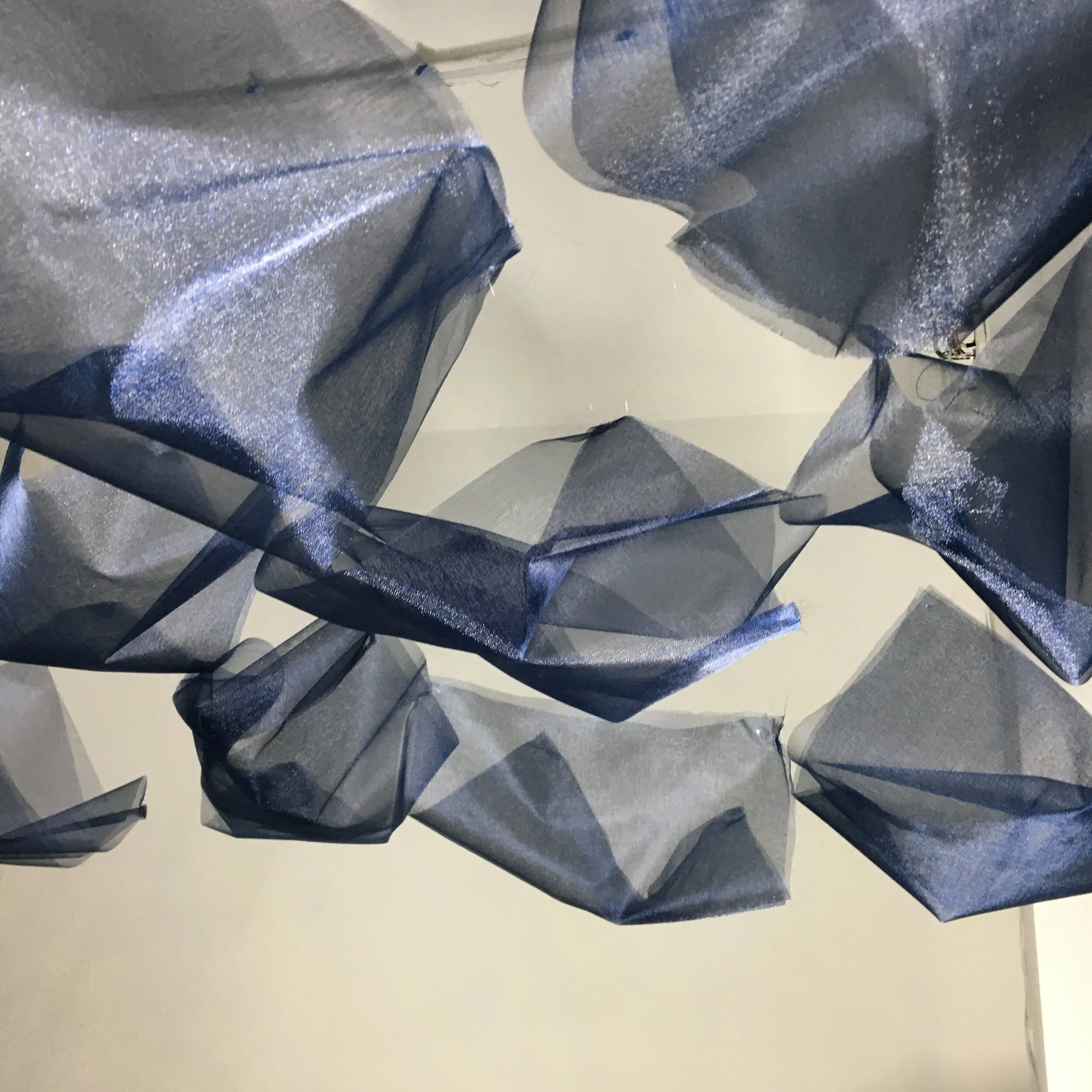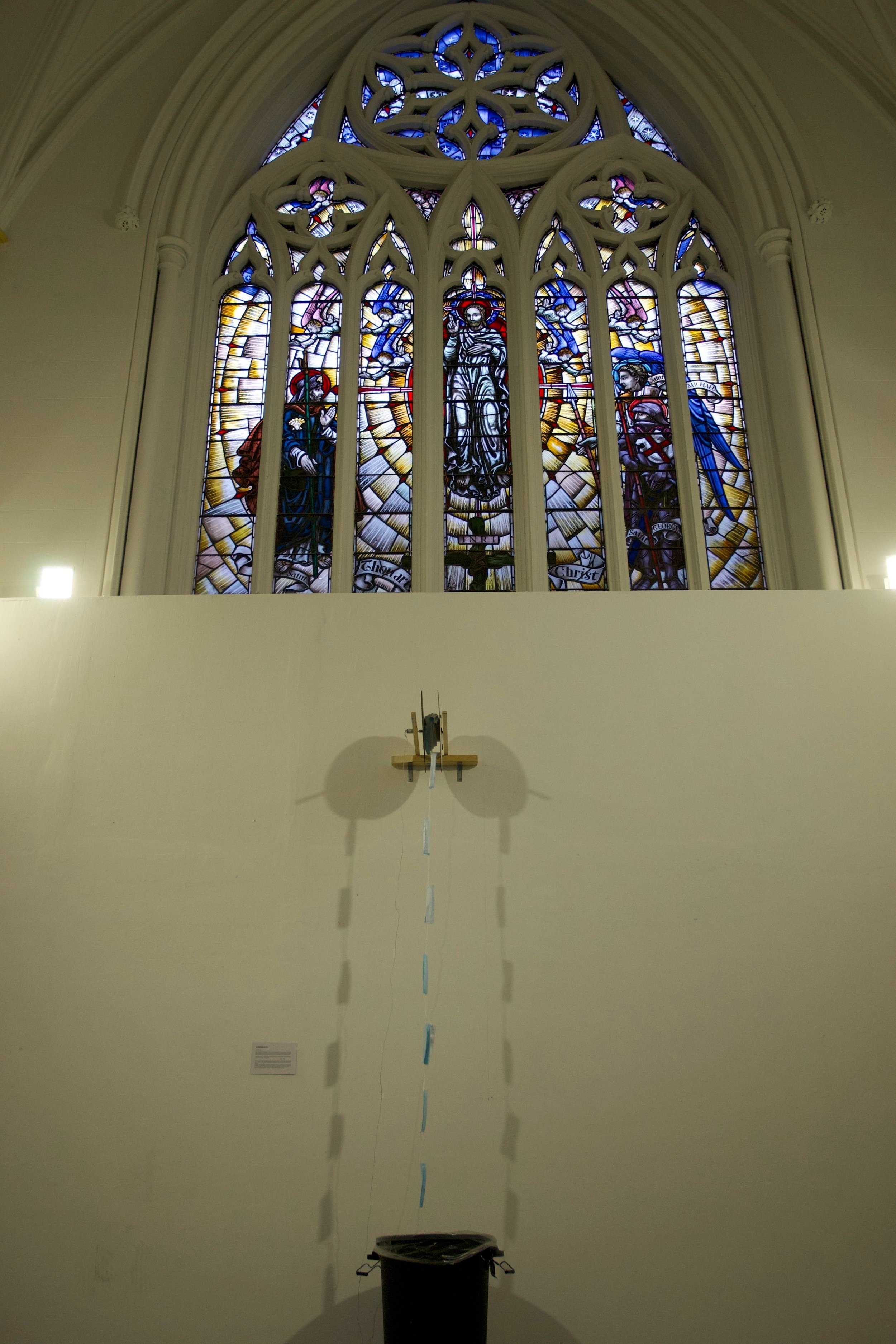MESSAGE IN A BOTTLE
This evocative installation merges technology, environmental data, and artistic expression to shed light on the devastating impact of plastic pollution in our oceans. Constructed with 13 controlled motors and leveraging a comprehensive dataset from NOAA's buoy near the Great Pacific Garbage Patch, this piece translates raw data into a sensory storytelling experience.
Drawing inspiration from the sea, a profound element of the artist’s upbringing, the work channels her obsession with water's movement into a poignant commentary on its current state. Message in a Bottle animates the significant wave heights recorded by NOAA's weather station 46246 (50°1'2" N 145°10'12" W), an area notoriously affected by the accumulation of plastic debris.
The installation operates by using the NOAA's historical data, logged every 30 minutes since 2010, to drive the motors that simulate the motion of waves within the Great Pacific Garbage Patch. This mechanical choreography, accompanied by a carefully designed soundscape and subtle visual projections, immerses viewers in the haunting reality of oceanic pollution. Unlike traditional visualisations, this work transforms static data into a living, breathing entity. The accompanying soundscape, composed to echo the rhythmic and often dissonant sounds of the sea, enhances the viewer's emotional connection, while the projections add a layer of ethereal beauty, contrasting starkly with the grim subject matter.
Through this work, O’Leary aims to invoke a deeper understanding and emotional response to the environmental crisis. The rhythmic rise and fall of the installation not only reflects the physical movements of the ocean but also serves as a metaphor for the relentless and pervasive nature of pollution. It’s a call to action, urging us to recognise and address the sublime scale of the impact we have on our natural world. Message in a Bottle is more than an artistic expression; it is a technological and environmental narrative brought to life. It embodies the artists interdisciplinary work and commitment to environmental advocacy, creating an immersive experience that challenges viewers to confront the reality of plastic pollution and the sublime of climate change.
The sounds played in the installation are from recordings I made at home in Dublin. I found bottles floating near the shore and captured the sound of the plastics colliding and interacting with the water allowing the viewers to feel immersed in the installation.
N.Y.SEA
Commissioned by Data X Design for New York Open Data Week, 2023
This work uses historic recordings of the NYC river levels in conjunction with storm flood water predictions to communicate the vulnerability of the New York subway system. The data controls the vertical movement while the sinusoidal cam-shaft creates undulating movements along the fabric where the artist has hand embroidered the various subway routes. The installation serves as a catalyst for introspection and dialogue, challenging audiences to reconsider their relationship with the environment and the limits of human understanding. "N.Y.Sea" stands as a testament to the transformative power of art and technology illuminating the complexities of our shared existence.
Soundtrack: Olsen, Boards of Canada
THE LOWLY BARNACLE
2024, Work in Progress, funded by The Arts Council
This project incorporates artificial intelligence technology with sound a moving sculpture. The work aims to make machine learning more accessible by employing the lowly barnacle as a metaphor.
372.5 ~ HOWTH
372.5 ~ Howth is a visualisation of the effortless distribution of water during the 6 hour tidal period. Using tidal charts from the artist’s home town of Howth, Dublin, the installation uses a system of pulleys and weights inspired by the historical methods of tidal measurement to recreate its current behaviour. The piece is a continuation of research into hyperobjects and how abstract data can transform using technology to make natures complexities tangible.
The sea is not a landscape or facilitator of human activity but an entity of vast geographical and temporal scale that possesses agency. It’s behaviour is constantly being predicted, recorded and stored. 372.5~Howth explores the effortless distribution of water during a tidal period. The piece is a continuation of O’Leary's research into hyperobjects and how abstract data can be transformed using technology to make natures complexities tangible.
There are patterns in nature we can see and understand but there are also patterns we cannot seem to figure out. There is a common understanding of the ebb and flow of tides but less awareness of the volume of water that is stretched within the typical 6 hour time frame (372.5 minutes). Having grown up by the sea I have been exposed to these shifts and have experienced the tidal movements whilst on the water sailing, swimming and paddleboarding. 372.5 ~ Howth uses a system of pulleys and weights inspired by the historical methods of tidal measurement to recreate its current behaviour.

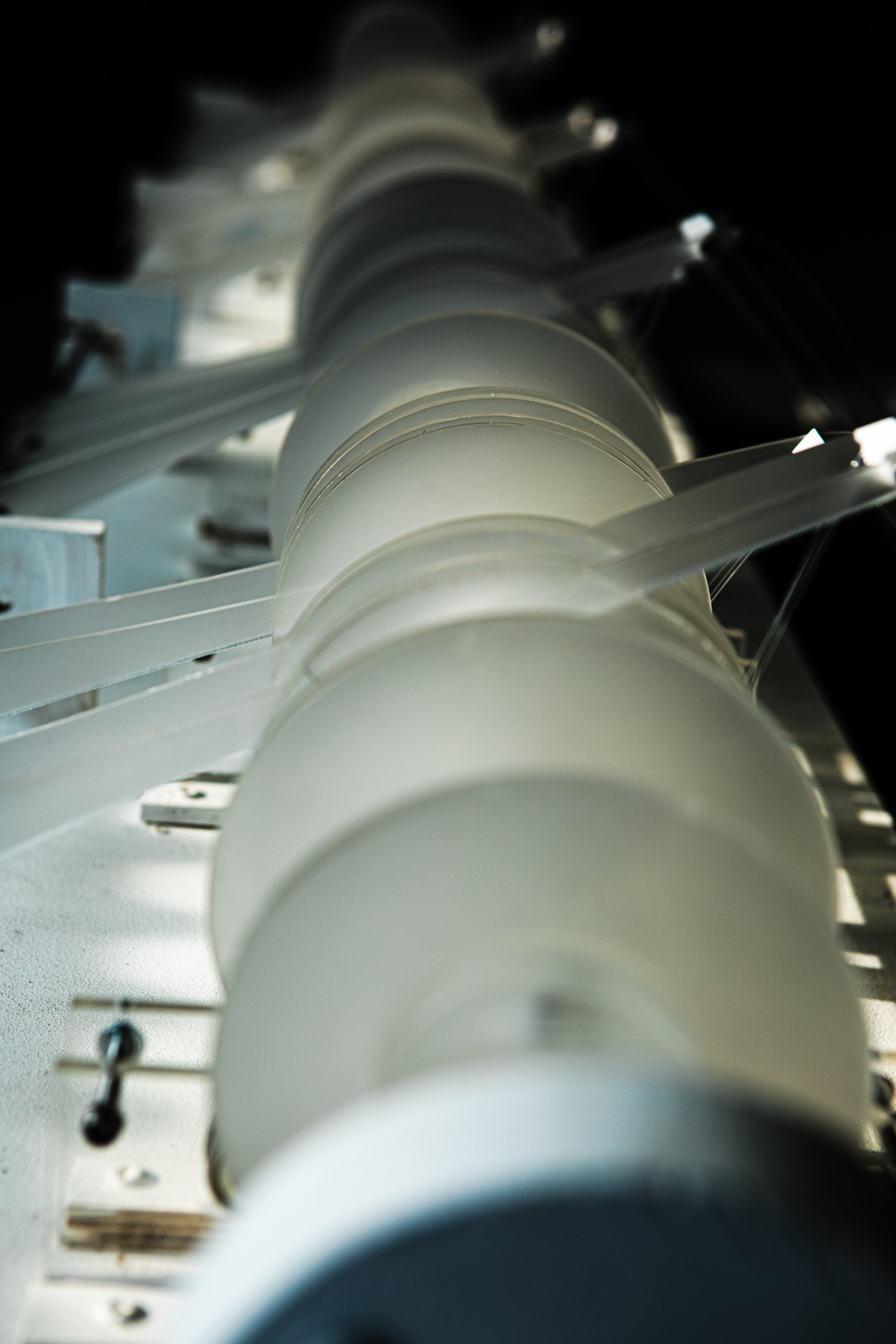
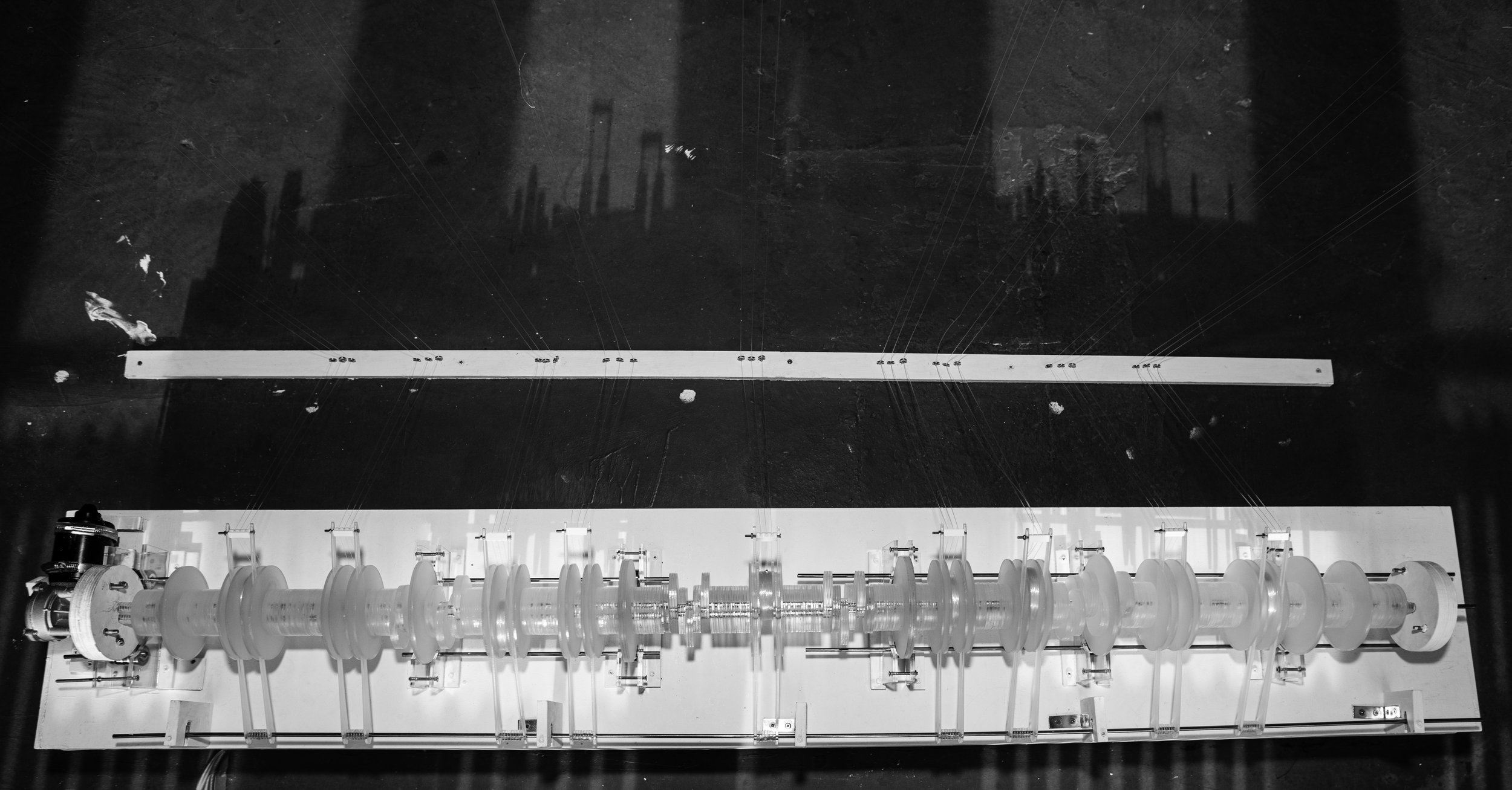
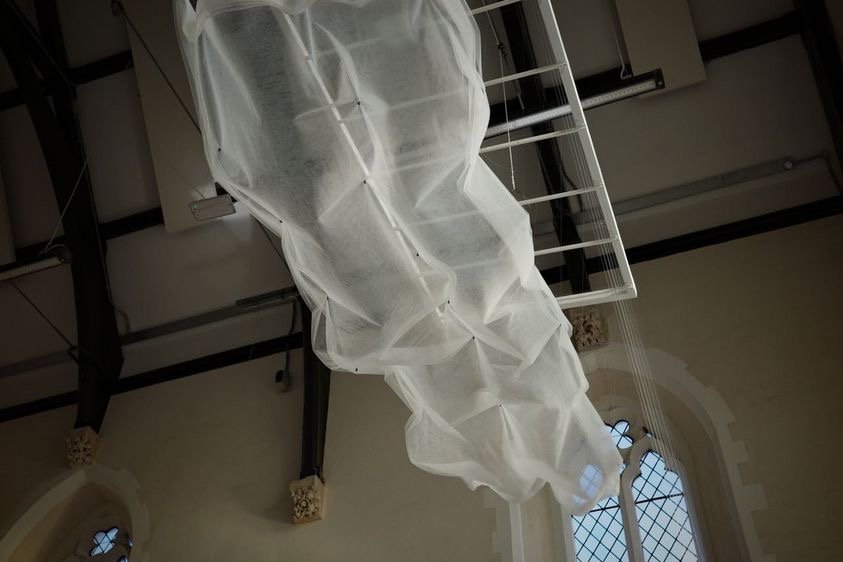
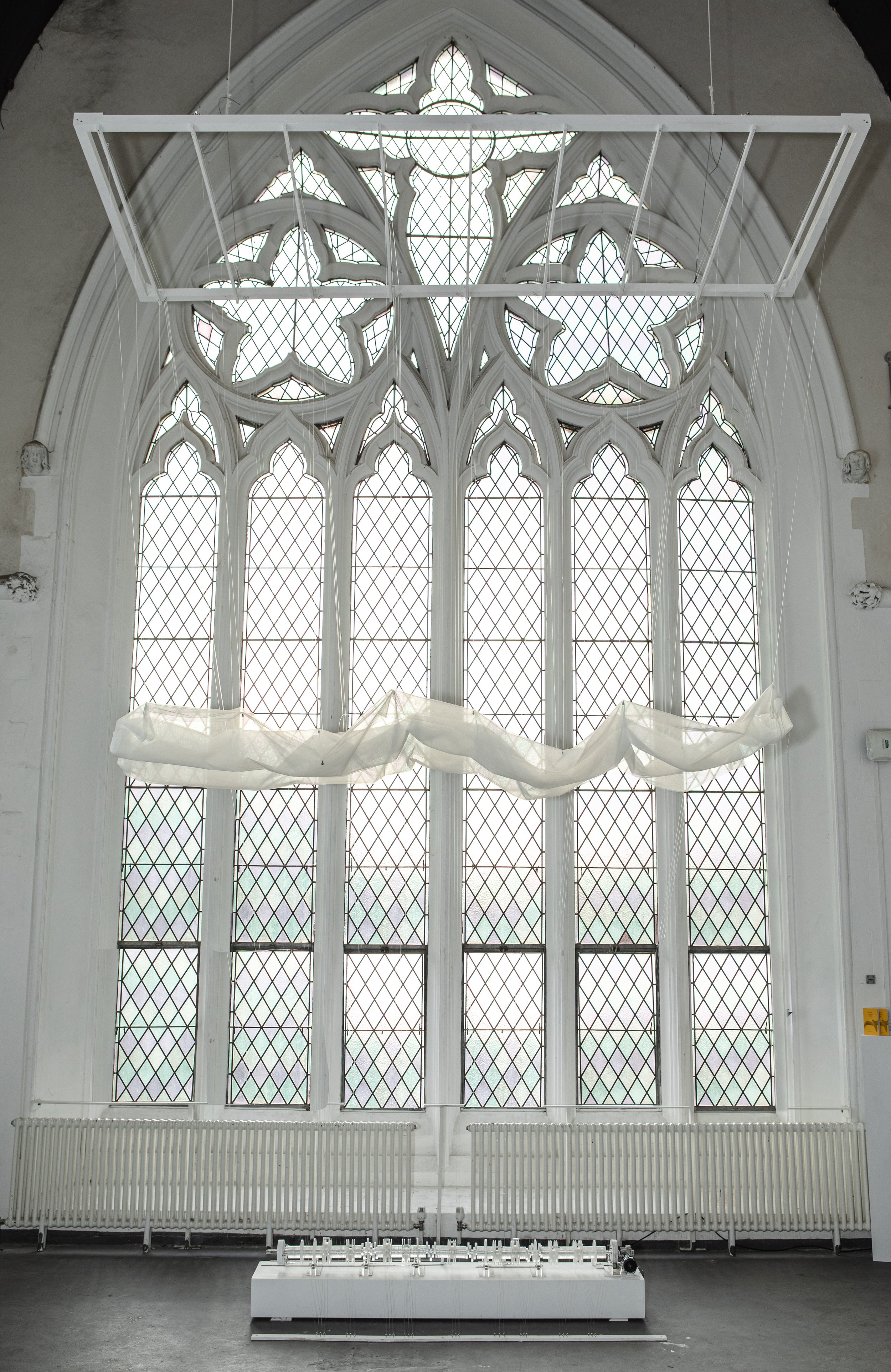
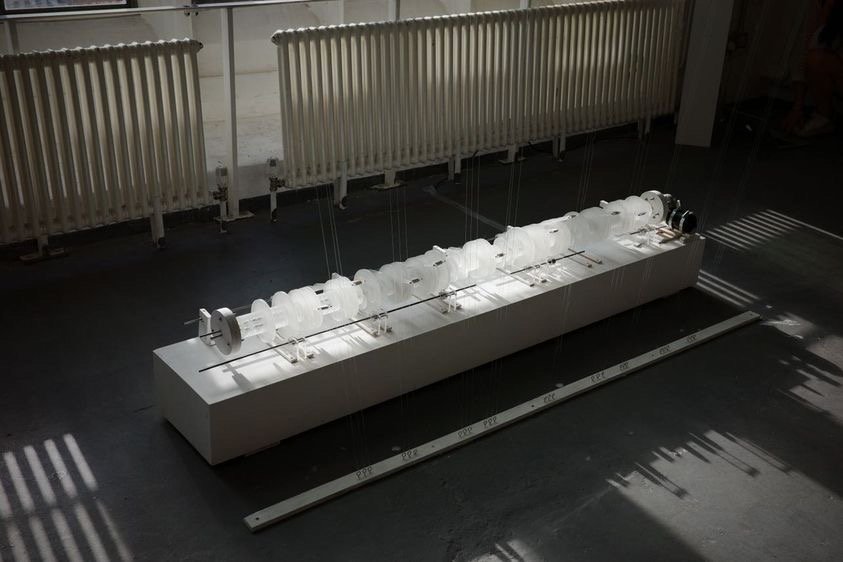

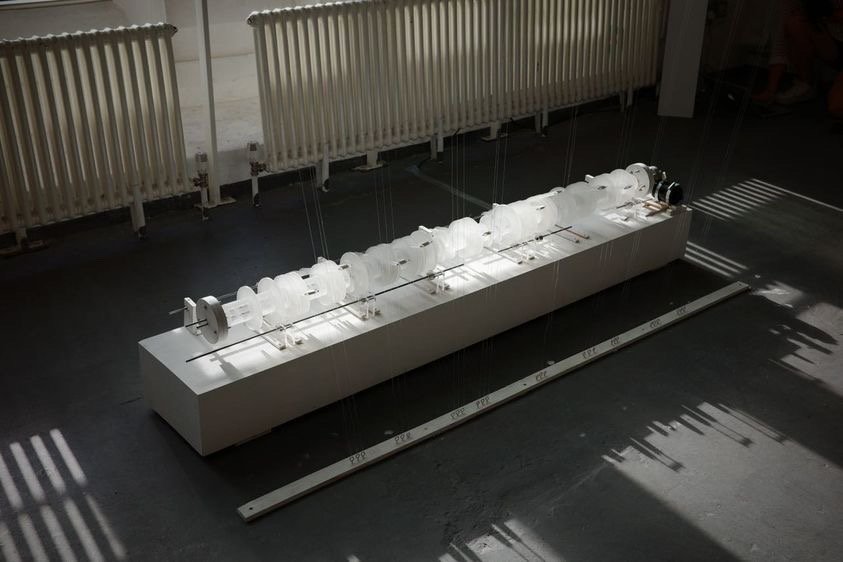
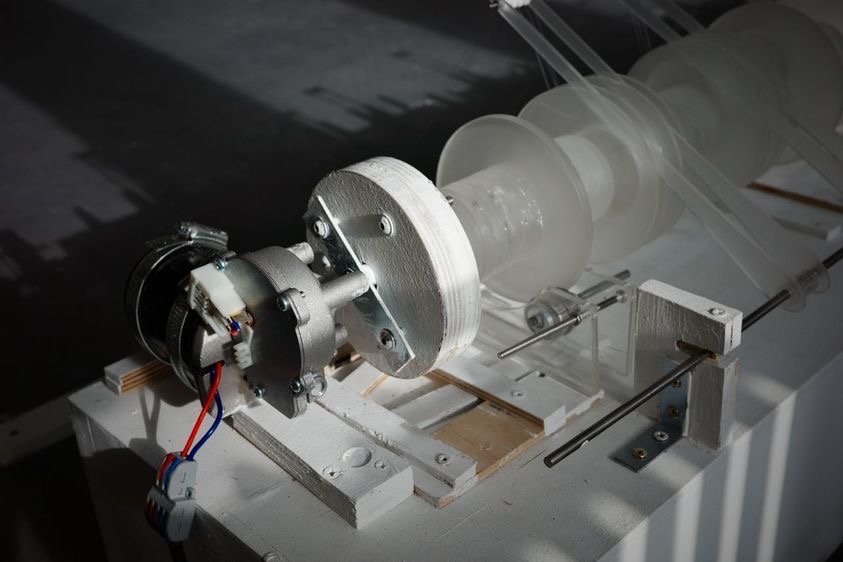
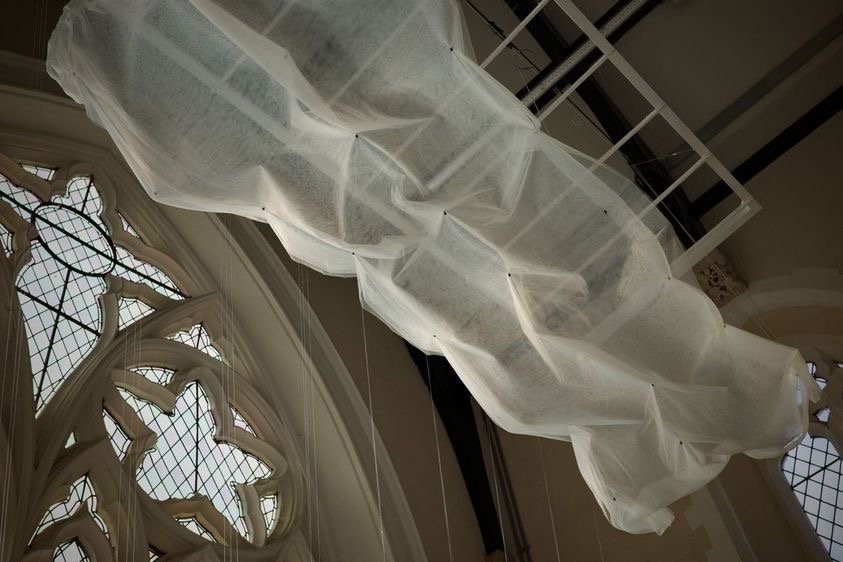
THE RIPPLE EFFECT
This piece is a continuation of my research into hyper-objects, climate change and nature. It is a starting point of a larger piece that will be a high-dimensional phase space, plotting multiple states of nature and this WIP attempts to recreate nature’s mechanism with physical computing.
SEA / SICK
I'm not homesick, I'm just missing the sea... After moving to London to do an MFA in Computational Art I realised how much I was missing the sea. Using wave data collected from the West Coast of Ireland, the corners of the fabric are tilted using micro-servos. The degree of rotation is determined by the wave heights and is connected to the fabric using invisible thread. The reflection of the fabric and the wave like motion hopes to connect people to the sea when they cannot physically get there.
HYPEROBJECTS
In 2020, 53 million facemasks were disposed of everyday in the UK in an attempt to reduce the spread of COVID19. Humans have made drastic lifestyle changes in response to the coronavirus and yet there is still reluctance to accept climate change. This work is an experimentation, using the facemask to address the overwhelming scale of the current ecological crisis and single use items.



